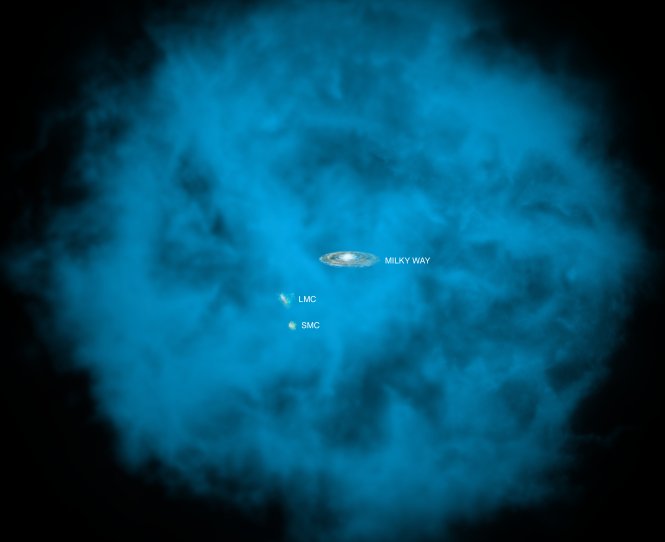
Our home galaxy, the Milky Way, contains a halo that consists of a hazy fog of dust, gas, and dark matter. Scientists already believe the enormous halo to measure at least 300,000 light-years across (as a reference point, the Milky Way itself reaches 100,000 light-years across space).
Now, a new study out of Ohio State University (OSU) suggests that the extreme temperatures the researchers found in a previous OSU analysis — up to 10 million degrees Kelvin, or about 18 million degrees Fahrenheit — could possibly be found throughout the whole halo. Prior it was believed that only certain parts of the halo could reach the high temperature.
“We can’t say for sure that it is everywhere, because we have not analyzed the entire halo,” said Smita Mathur, professor of astronomy at OSU. “But we know now that the temperatures we saw in the first study definitely are not unique, and that is very exciting.”
A recent April study out of the University of California, Irvine found that the Milky Way could be flinging stars into the outer halo. The movements are believed to be triggered by powerful supernova explosions. Supernovas occur when stars explode and lose most of their mass.
Using “hyper-realistic” computer simulations from the Feedback in Realistic Environments 2 project (FIRE 2), the scientists modeled the disruptions in galactic rotations that would otherwise be considered orderly.
“These highly accurate numerical simulations have shown us that it’s likely the Milky Way has been launching stars in circumgalactic space in outflows triggered by supernova explosions,” study author James Bullock, dean of the university’s School of Physical Sciences and a professor of physics and astronomy. “It’s fascinating, because when multiple big stars die, the resulting energy can expel gas from the galaxy, which in turn cools, causing new stars to be born.”
The data from the Ohio State report came from an X-ray observatory telescope run by the European Space Agency. That telescope, called XMM-Newton, collects data in X-rays that would have otherwise been blocked by Earth’s atmosphere.
“It showed us that the halo was much hotter than we had known, but it didn’t show us whether that was the case throughout the galaxy, or if the telescope had picked up an aberration caused by an unknown force coming from the direction where the telescope was pointed,” Mathur said.
Anjali Gupta, a visiting astronomy researcher at OSU, analyzed data from Suzaku, a Japanese X-ray satellite telescope, which collected spectrum data from the Milky Way’s halo in four different directions. That analysis confirmed their earlier findings — that the halo is much hotter than had previously been known.
However, it still remains to be seen if the same conditions exist for halos surrounding those galaxies far, far, away.
The new findings were presented at the annual meeting of the American Astronomical Society, held online this week because of the COVID-19 pandemic.






